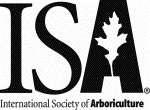
| Current Articles |
| Browse Archives |
| Search |
| Contact Us |
| AUF Home |
 |
Arboriculture & Urban Forestry Online
| Volume 22, Issue 5 —
September 1996
https://www.isa-arbor.com/Publications/Arboriculture-Urban-Forestry |
|
Polyethylene Plastic Wrap for Tree Wounds: A Promoter of Wound Closure on Fresh Wounds (View PDF) Dennis N. McDougall and Robert A. Blanchette Abstract: Tree wounds are often accompanied by the dieback of uninjured cambium at the edges of the wound. Dieback increases wound size and lengthens the time that xylem is exposed and susceptible to colonization by decay fungi. Wrapping new wounds with polyethylene plastic sheeting (PEP) can reduce dieback and promote the formation of callus tissue. Fresh wounds on aspen and maple wrapped with PEP had significantly less dieback than unwrapped wounds after 14 weeks. When PEP treatment was delayed 1 week or longer after wounding, there was no difference in wound size. Fresh wounds of aspen wrapped with PEP for 1 week were significantly smaller than unwrapped wounds after 15 weeks. In maple, 2 weeks of wrapping with PEP was required to improve wound closure. The use of PEP on wounds of birch did not affect wound size. Wounds of aspen continuously wrapped for 2 years with PEP did not have more colonization by decay fungi than untreated control wounds. Keywords: Tree, wound dressings, discoloration, decay, basidiomycetes. |
Current Articles
| Browse Archives | Search | AUF Home | ISA Home
| Get Acrobat